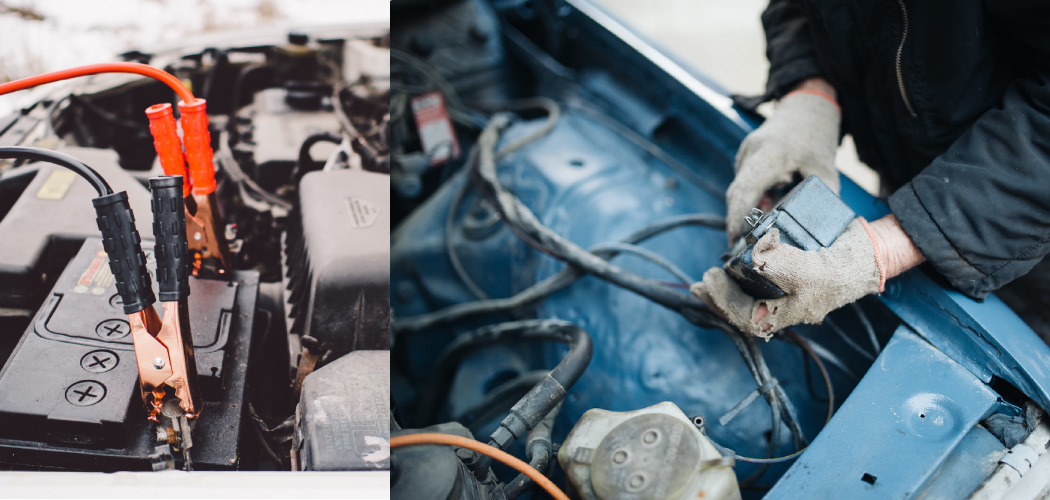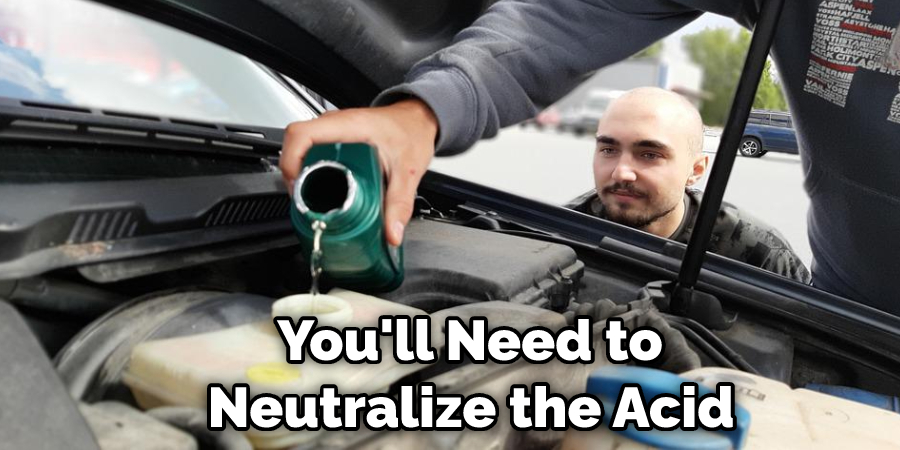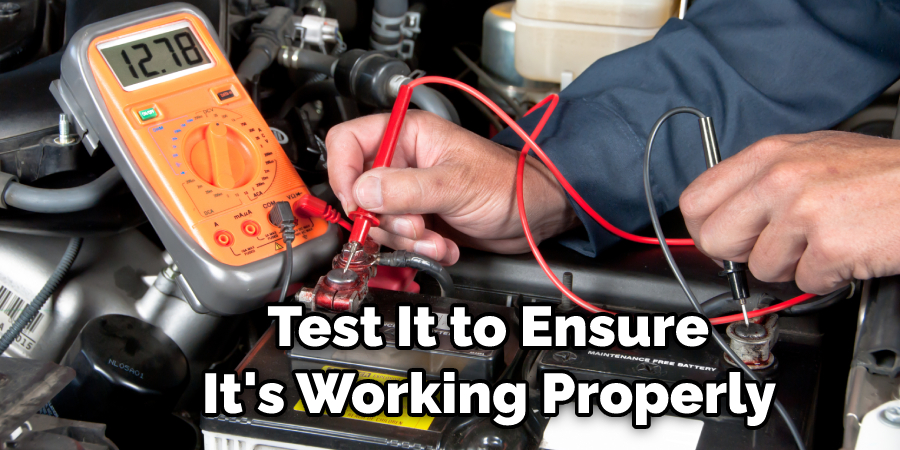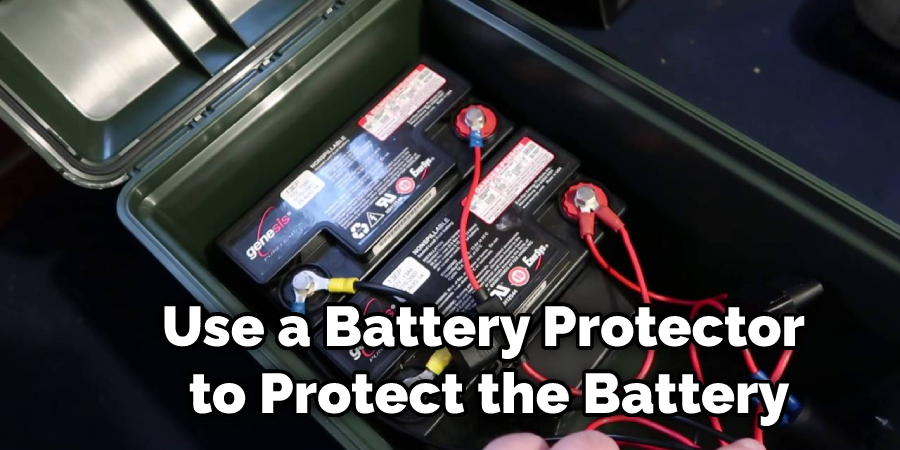If your car battery is leaking acid, don’t panic! It’s a fairly easy fix, and you can do it yourself with the right tools and supplies. In this blog post, we’ll show you how to fix a leaking car battery, and prevent future leaks. We’ll also share some helpful tips on choosing the right car battery for your needs. So read all the information you need to know about fixing a leaking car battery.

What Causes a Car Battery to Leak?
There are a few different reasons why a car battery might leak, including:
Overcharging:
When a battery is overcharged, the electrolyte inside the battery can boil and leak out. Overcharging can happen if you leave your car’s lights on too long or forget to turn off the engine after driving. If a battery is overcharged, the electrolyte inside the battery can boil and leak out. Overcharging can happen if you leave your car’s lights on too long or forget to turn off the engine after driving. A battery can also be overcharged if it’s plugged into a charger for too long.
Damaged Seals:
If the seals on your car battery are damaged, acid can leak out. This can happen if your battery is old and the seals have degraded, or if the battery was damaged in a collision. Damaged seals can also be caused by incorrect installation, so be sure to have your battery installed by a professional.
Manufacturing Defects:
Sometimes, batteries are simply defective and will leak acid, even if they’ve never been overcharged or damaged. If you suspect your battery is defective, take it to a professional for testing.

Faulty Charger:
If you’re using a faulty charger to charge your car battery, it can overcharge the battery and cause it to leak. Instead, be sure to use a quality charger that is designed for your car’s battery.
Extreme Temperatures:
The freezing or boiling of the electrolyte in your car battery can cause leaks due to extreme cold or heat. Additionally, temperatures below freezing can damage the battery seals and cause leaks.
Step by Step Guide – How to Fix a Leaking Car Battery
1. Disconnect the Battery:
The first step in fixing a leaking car battery is to disconnect the battery from your car. This will prevent any further acid damage to your car. To do this, locate the negative terminal of your battery and remove the cable. Then, locate the positive terminal and remove the cable. Next, use a wrench to loosen the bolts if necessary.
2. Remove the Battery From the Car:
Once the battery is disconnected, you’ll need to remove it from the car. Again, be sure to wear gloves and eyewear to protect yourself from the acid. To do this, locate the battery hold-down and remove it. Then, lift the battery out of the car and set it on a surface that the acid won’t damage.
3. Inspect the Battery for Damage:
Once you’ve taken the battery out of the car, give it a once-over for any damage. cracks, leaks, or other kinds of damage. If you notice anything amiss, it’s best to play it safe and get a new battery. If the damage looks minor, though, you might be able to repair it with some sealant.
4. Clean the Battery Terminals:
Use a wire brush to clean the battery terminals. This will remove any corrosion that has built up on the terminals. Be sure to clean the terminals well so the current can flow freely. If the terminals are not clean, the current will be hindered, and the battery will not work properly.

5. Neutralize the Acid:
If there is a small acid leak, you’ll need to neutralize the acid. To do this, mix equal parts water and baking soda. Then, use a brush to apply the mixture to the affected areas. Allow the mixture to sit for a few minutes, then rinse it off with water. If the leak was large, you might need to neutralize the entire battery.
6. Rinse Off the Neutralizer:
Once you’ve neutralized the acid, you’ll need to rinse off the neutralizer. To do this, simply spray the battery down with a hose. Be sure to rinse off all of the neutralizers so that it doesn’t damage the battery. If you have a pressure washer, you can use that to rinse off the battery.
7. Dry Off the Battery:
Once you’ve rinsed off the neutralizer, you’ll need to dry off the battery. To do this, simply wipe down the battery with a clean cloth. Be sure to get rid of all the moisture so that the battery doesn’t rust. If possible, allow the battery to air dry for a few hours.
8. Clean the Battery Case:
Use a rag to clean the battery case. This will remove any acid that has leaked out of the battery. Be sure to clean the case well so that the new battery will have a good connection. The new battery will not work properly if the case is not clean.
9. Apply Sealing Compound to the Seals:
If the battery seals are damaged, you’ll need to apply a sealing compound to them. This will ensure that the new battery doesn’t leak. To do this, first, clean the area around the seals. Then, apply a thin layer of sealing compound to the seals. Be sure to follow the instructions on the sealing compound.
11. Reconnect the Battery:
Once the battery is installed, you can reconnect it to the car. To do this, first, connect the positive terminal. Then, connect the negative terminal. Finally, be sure to tighten the bolts on the terminals so that they don’t come loose. If the terminals are not tight, the battery will not work properly. Use a wrench to tighten the bolts if necessary.
12. Test the Battery:
Once the battery is reconnected, you’ll need to test it to ensure it’s working properly. To do this, simply turn on the car and let it idle for a few minutes. If the battery is working properly, the car should run smoothly. However, the car may stall or have other problems if the battery is not working properly. Ensure that the battery is working properly. It’s best to take the car for a test drive.
How to Prevent a Leaking Battery
There are a few things you can do to prevent a leaking battery.

1. Check the Battery Regularly:
Be sure to check the battery regularly for leaks. If you notice a small leak, neutralize it immediately. It’s also a good idea to keep an eye on the battery’s water level and top it off as needed.
2. Avoid Overcharging:
Overcharging the battery can cause it to leak. To avoid this, be sure to charge the battery only when needed. When charging the battery, be sure to follow the instructions in the owner’s manual.
3. Store the Battery Properly:
When storing the battery, keep it in a cool, dry place. Also, be sure to disconnect the battery from the car. This will prevent the battery from overcharging. If possible, store the battery in a plastic bag to protect it from moisture.
4. Use the Right Battery:
Be sure to use the right battery for your car. If you’re not sure which battery to use, consult the owner’s manual. Using the wrong battery can cause it to leak. Ask a mechanic if you’re still unsure which battery to use.
5. Keep the Battery Clean:
Be sure to keep the battery clean. Dirt and grime can cause the battery to leak. To clean the battery, simply wipe it down with a rag. Be sure to clean the terminals as well. If the battery is very dirty, you may need to use a brush.
6. Use a Battery Box:
If you’re going to store the battery for a long period of time, be sure to use a battery box. This will prevent the battery from leaking. To use a battery box, simply place the battery in the box and seal it. If possible, store the battery box in a cool, dry place.
You Can Check It Out To Fix Overcharged Battery
7. Monitor the Battery Temperature:
Be sure to monitor the battery temperature. If the battery gets too hot, it may leak. To avoid this, be sure to keep the battery out of direct sunlight. Also, be sure to keep the battery away from heat sources. If the battery gets too cold, it may also leak. To avoid this, be sure to store the battery in a warm place.

8. Charge the Battery Regularly:
Be sure to charge the battery regularly. This will help to prevent the battery from leaking. To charge the battery, simply connect it to a charger and let it charge for a few hours. Be sure to disconnect the battery from the charger when it’s done charging. If you don’t charge the battery regularly, it may eventually leak.
9. Avoid Exposure to Water:
Be sure to avoid exposure to water. Water can cause the battery to leak. To avoid this, be sure to keep the battery dry. If the battery does get wet, be sure to dry it off immediately.
10. Use a Battery Protector:
If you’re going to store the battery for a long period of time, be sure to use a battery protector. This will help to prevent the battery from leaking. Simply place the battery in the protector and seal it to use a battery protector. If possible, store the battery in a cool, dry place.
You Can Check It Out To Fix a Dead ATV Battery
How Much Does it Cost to Fix a Leaking Battery?
The cost of fixing a leaking battery will vary depending on the severity of the leak. If the leak is small, you may be able to fix it yourself. However, if the leak is large, you may need to replace the entire battery. The cost of replacing the battery will vary depending on the make and model of your car. Normally, the cost of replacing the battery will range from $100 to $300.
Frequently Asked Questions
What Should I Do if My Car Battery is Leaking?
If your car battery is leaking, it’s important to take action as soon as possible. Leaking batteries can lead to a number of problems, including decreased acceleration and braking power, knocking noises when the vehicle is started, corrosion on the frame or undercarriage, and difficulty starting the engine.
If you see any of these signs in your car, it’s best to bring it in for repair right away. In addition to fixing the battery itself, technicians may also need to replace other components that are impacted by fluid leakages such as start sensors or alternators. Without proper diagnosis and repair work done quickly, you could be facing significant repairs down the road that would otherwise have been avoided had you detected the problem earlier.
Can I Still Use a Leaking Battery?
There is still a small chance that you can use a leaking battery, but it’s best to get it fixed as soon as possible. Leaking batteries can create environmental hazards and may even lead to a fire. In the worst-case scenario, they could even explode. If you think your battery is leaking, don’t hesitate to replace it as soon as possible.
Is It Safe to Drive a Car With a Corroded Battery?
Yes, it is safe to drive a car with a corroded battery. However, it’s important to take the necessary precautions in order to avoid any accidents. Here are a few tips that will help you stay safe while driving:
- Check your car’s battery status – If you’re not sure if your battery is corroded, you can check its status using a car battery tester. This will help you to identify any issues early on, and avoid any potential accidents.
- Slow down – When driving, always slow down if you see signs that your battery is starting to fail. This will help to prevent any accidents and make sure that you get to your destination safely.
- Beware of potholes – If you’re driving in an area with a lot of potholes, be especially careful. This is because potholes can damage batteries even further, potentially leading to an accident.
If you’re ever in doubt about whether or not it’s safe to drive your car, always err on the side of caution and avoid any risky situations. We hope this helps!
What is the Liquid That Leaks Out of Batteries?
Lithium-ion batteries commonly leak lithium-ion, which is a highly flammable and toxic chemical. This liquid can spread through the air and contaminate surfaces and furniture if not properly contained.
Conclusion
So there you have it, A simple guide to how to fix a leaking car battery. Be sure to take all of the necessary precautions when working with sulfuric acid, and always consult with a professional if you are unsure about how to proceed. Have you had to fix a car battery before? Let us know in the comments below!
